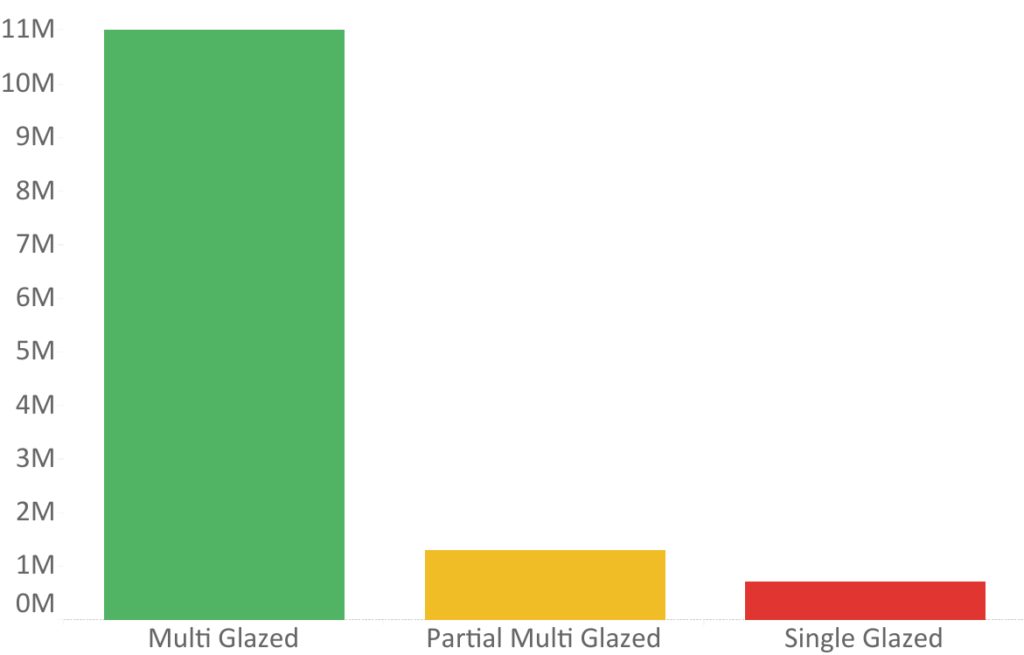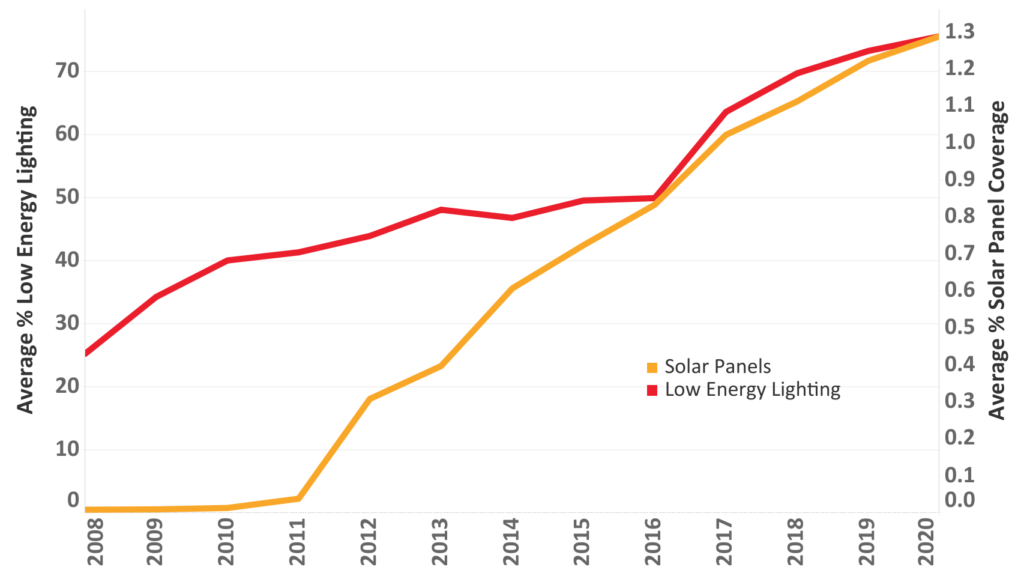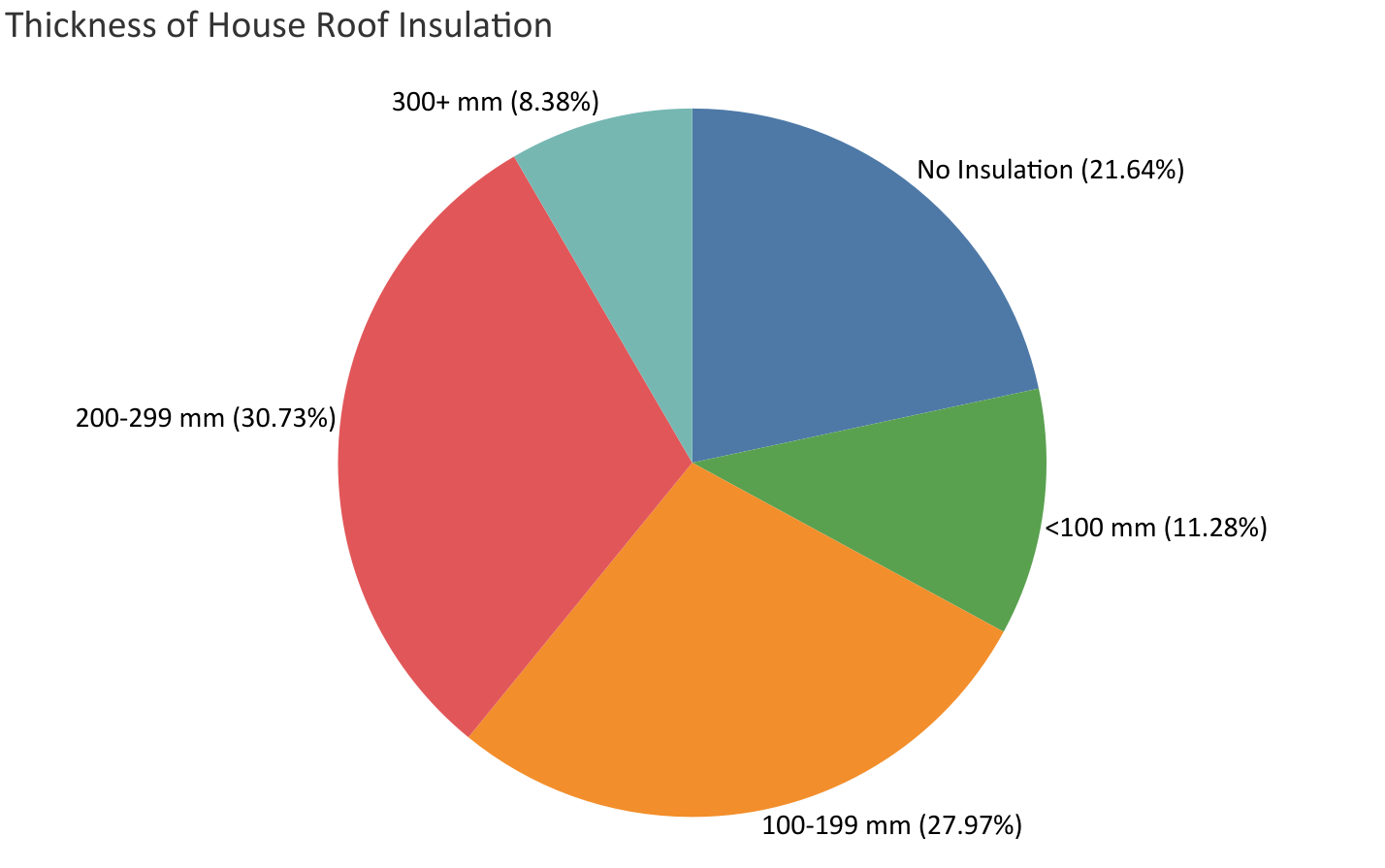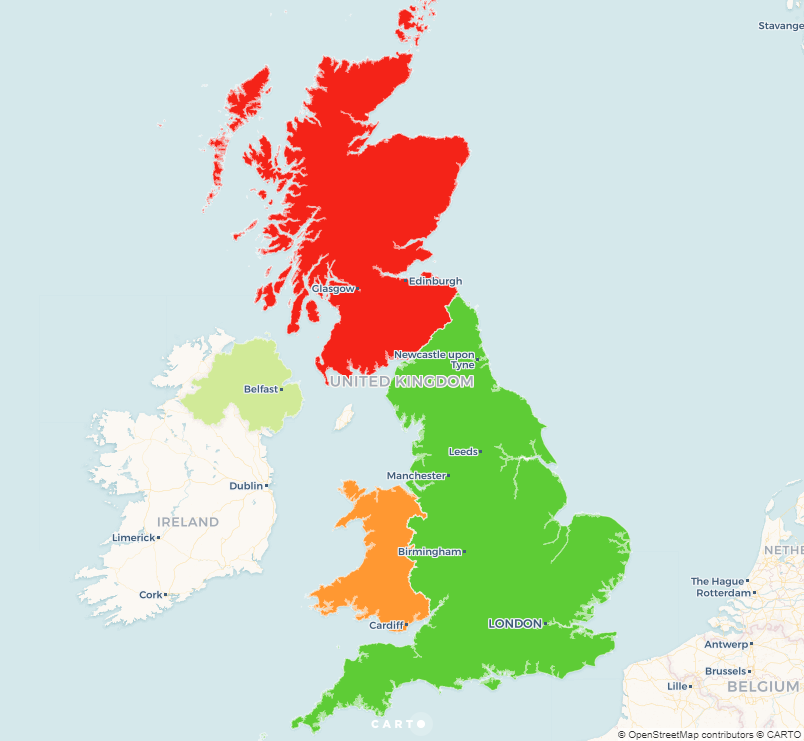How efficient are our homes?
Share
This visualisation was created using:
DoordaPropertyOur impact on the planet arises from a wide range of human activities. Some of us may want to believe the damage is being done by big businesses and there’s little we can do. However, in 2004 total energy usage in homes accounted for 30.23% of all energy consumption in the UK. We can all do our bit to bring this down by making our homes as energy-efficient as possible.
Using our DoordaProperty product, we can analyse the EPC reports of over 15 million households in the UK since 2008.
How Efficient Are We?
An EPC report shows the current energy efficiency (as a rating from A-G and as a numerical value) as well as the potential efficiency if all available improvements were made as shown in the graph above. The average household efficiency has increased marginally in the last 12 years and has actually moved further away from the average potential efficiency. This is partly due to a large jump in the potential efficiency in 2012, caused by changes in the way EPC ratings are measured and advancements in sustainable technology.
This demonstrates the uphill battle we still face in improving the efficiency of our homes. In 2017 the government outlined a new target to increase every household to at least EPC band C by 2035. A government-led report found we are severely behind schedule and much more funding and policy changes are needed if we are going to achieve this goal. For more information click here.
What Can We Do?
The energy used for heating has increased by a third in the last 40 years. Heating is by far the largest energy sink and is the easiest way to increase your home’s efficiency.
Most heat energy is lost through a home’s walls and roof. The pie chart below describes the thickness of insulation in houses in the UK.

In general, an EPC report will describe the efficiency of insulation <100 mm as ‘poor’ or ‘very poor’. Since 2012 installation of insulation under government schemes is down by 95% (see page 17). This is largely due to spending cuts in the Energy Company Obligation (ECO), a government-funded scheme that targets low-income households.
Not All Doom and Gloom
There have been big strides in insulating certain areas of the home. Windows are the second-largest source of heat loss after walls and roofs. Double glazing windows lose half as much heat as single glazed, this is therefore an effective way to increase a house’s EPC rating.

Most UK homes are now completely double glazed, but 15.4% can still be upgraded. We can show the percentage of houses with single glazed windows year on year to show changes over time.
A sharp decline is seen until 2015 when the graph plateaus just under 4%. This may be due to historical buildings where the windows are preserved or private landlords unwilling to upgrade their properties. Recent legislation means private landlords now have to bring their properties to at least band E, so single glazed windows may soon be a thing of the past. For more information on the legislation click here.
A lightbulb moment

As well as double glazed windows there have been improvements in low energy lighting and increased use of solar panels by households. The proportion of low energy lightbulbs in homes is now 75.6% and growing steadily.
The adoption of solar panels has been driven by reduction in costs and technological improvements.
Conclusion
EPC ratings continue to provide insights into the efficiency of the UK housing stock. This analysis is essential in order to assess our progress towards a net-zero carbon society. As shown there are still many areas where we can improve the efficiency of our homes and save, not just money, but also the planet.
Looking for Property Information?
This package features over 34 Million linked addresses including residential and commercial location details as well as buildings under construction.









